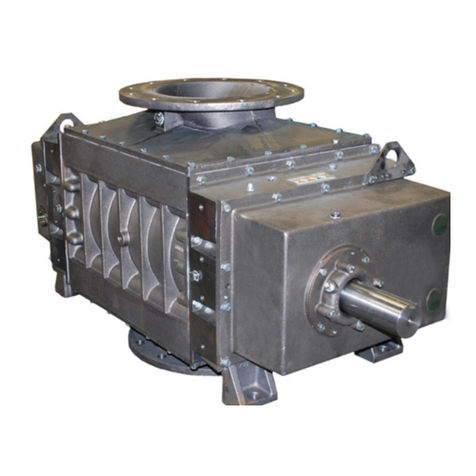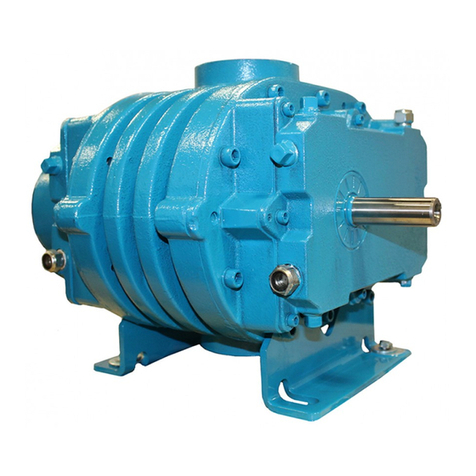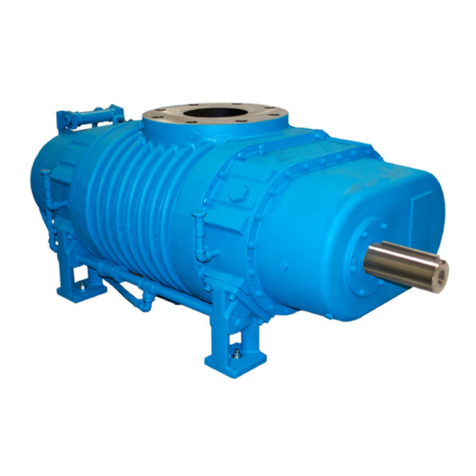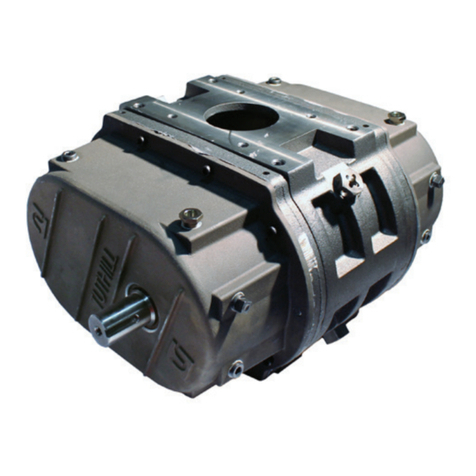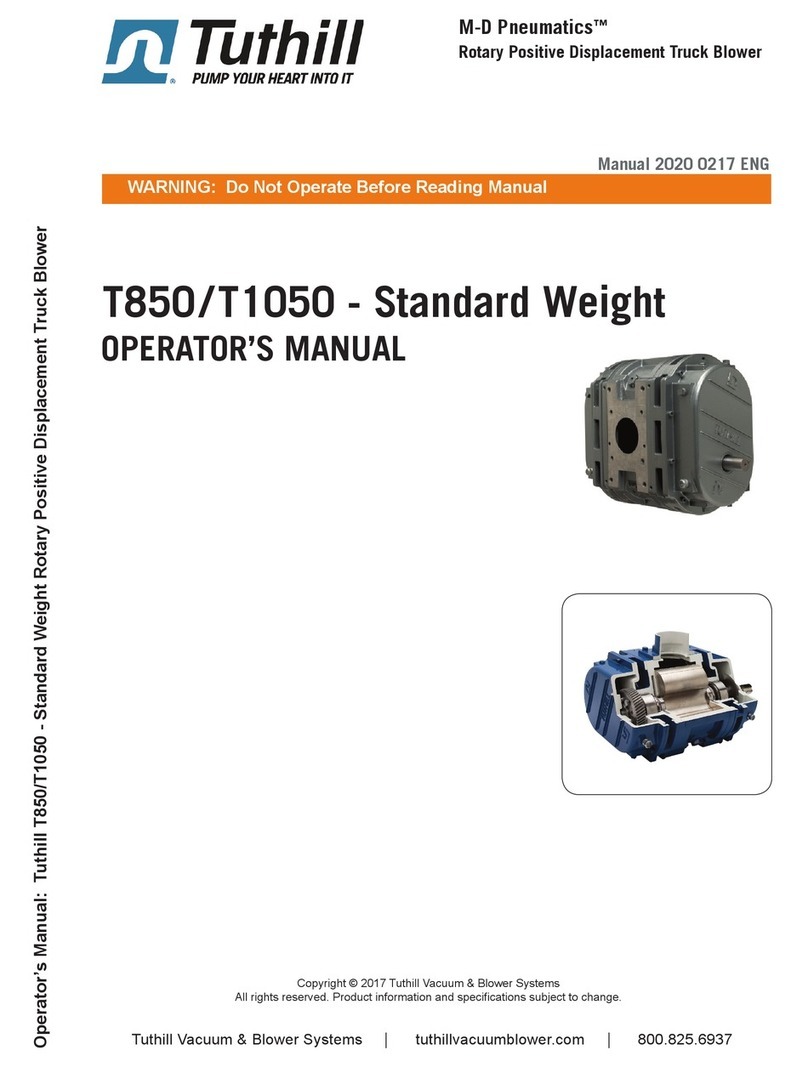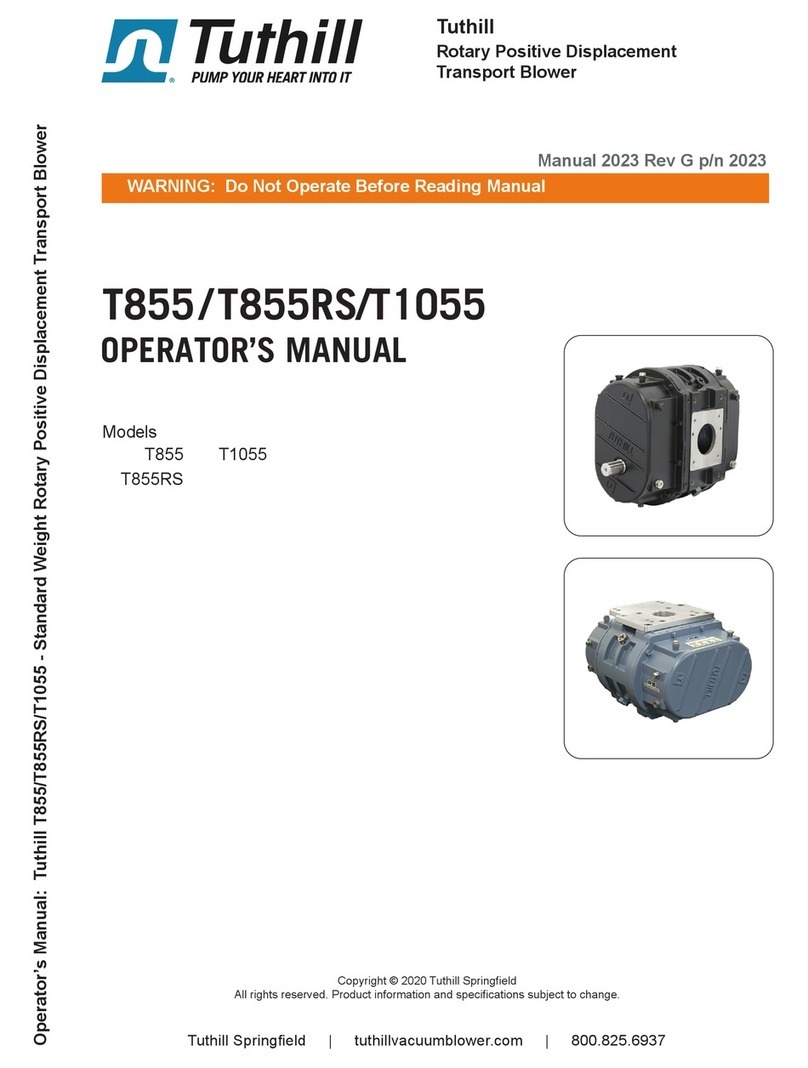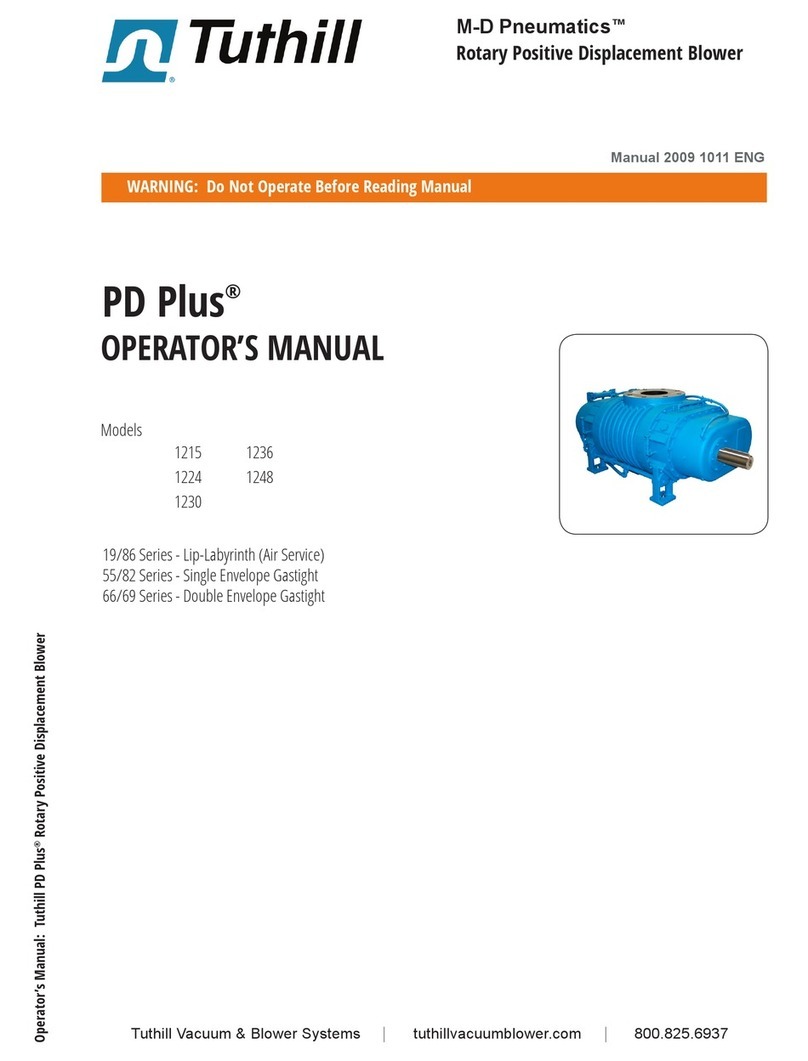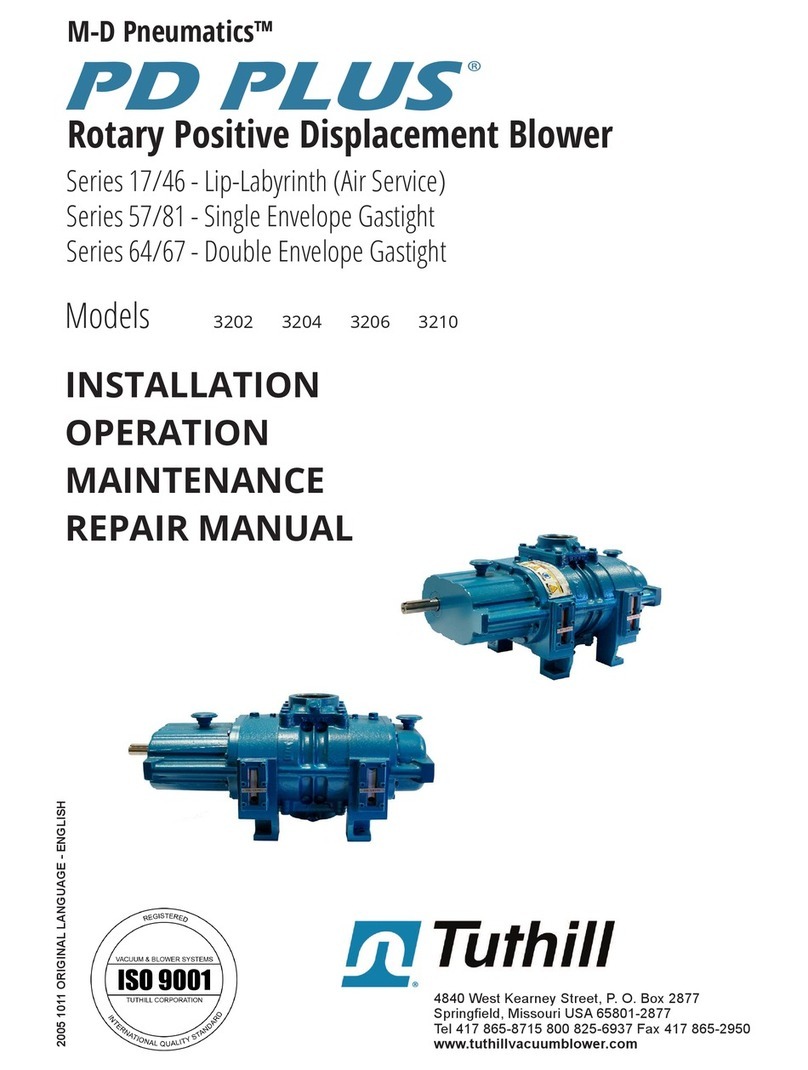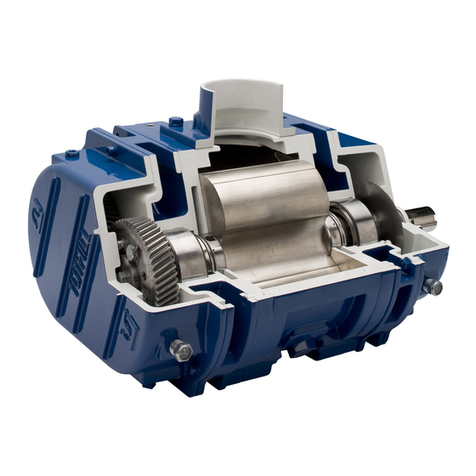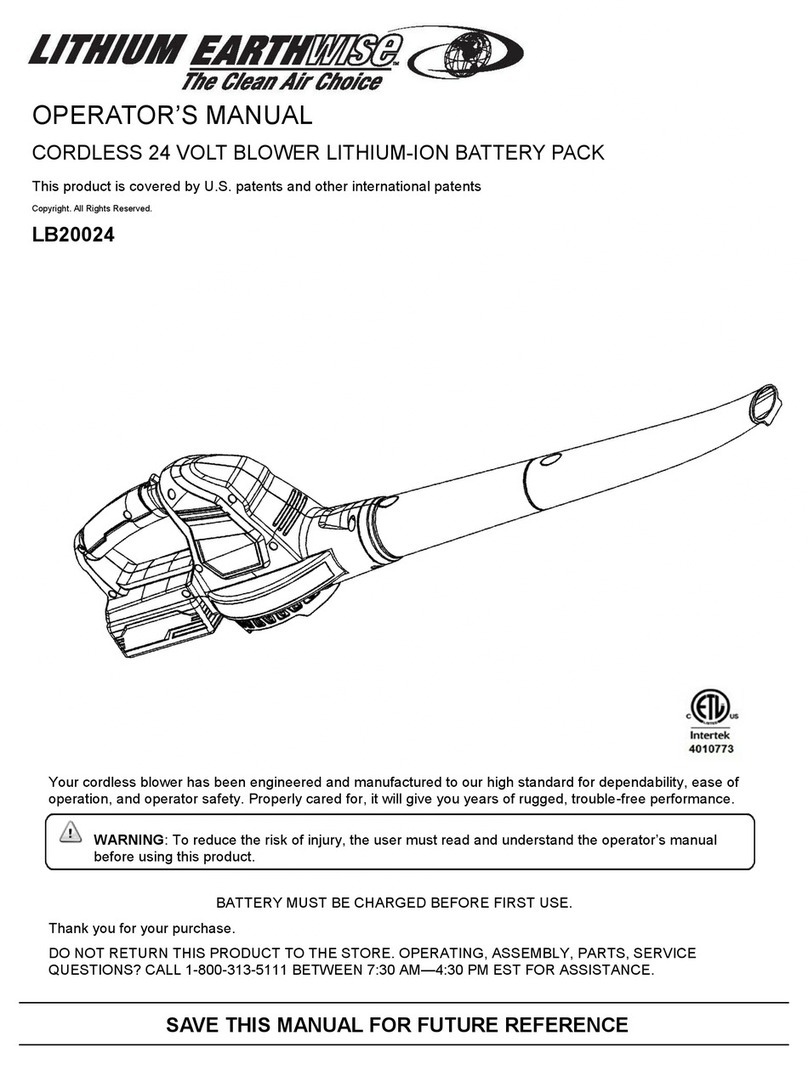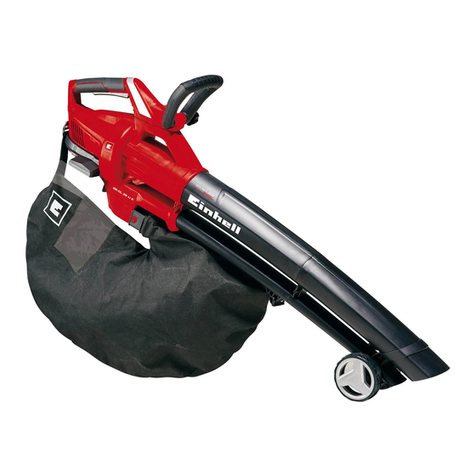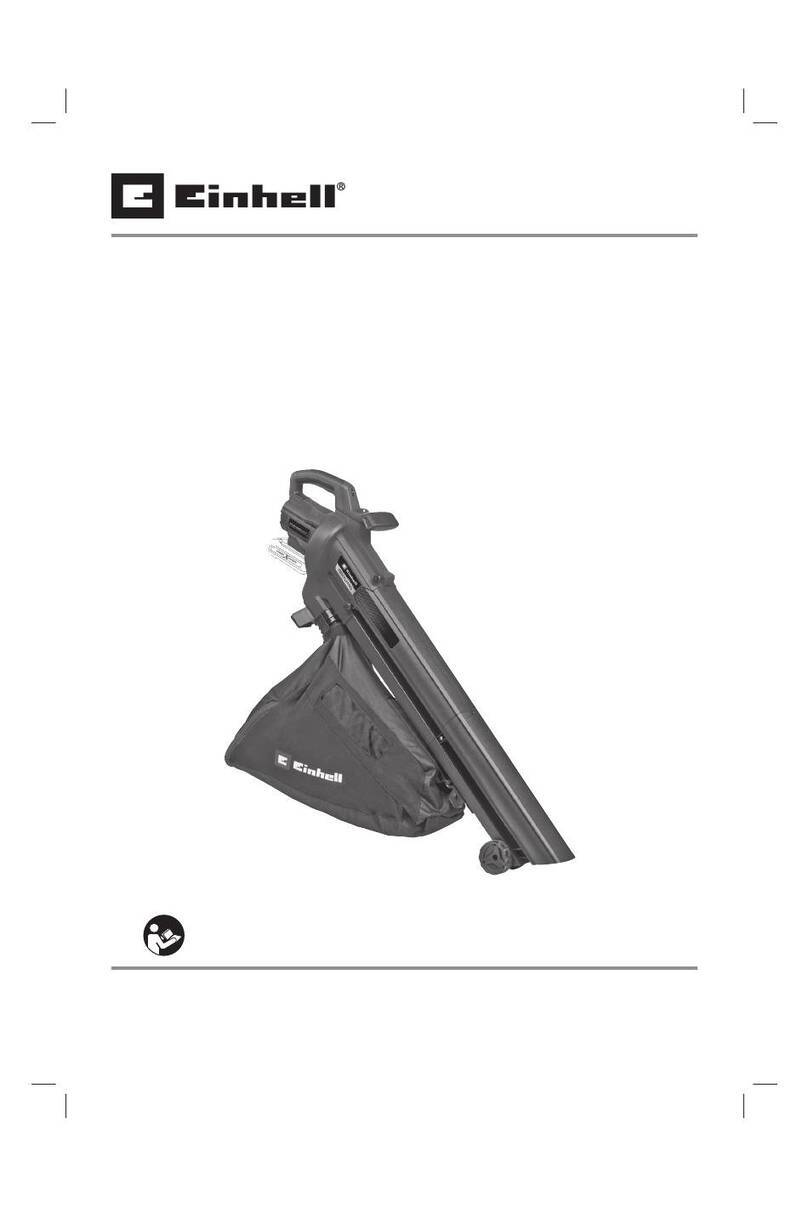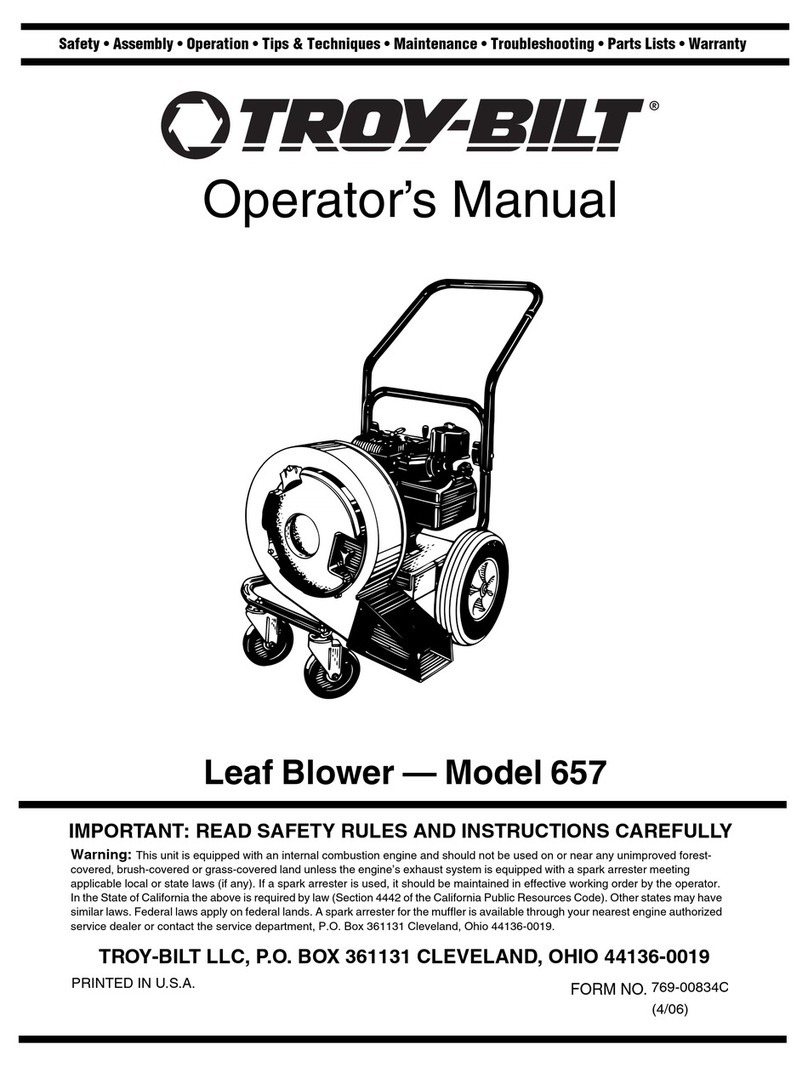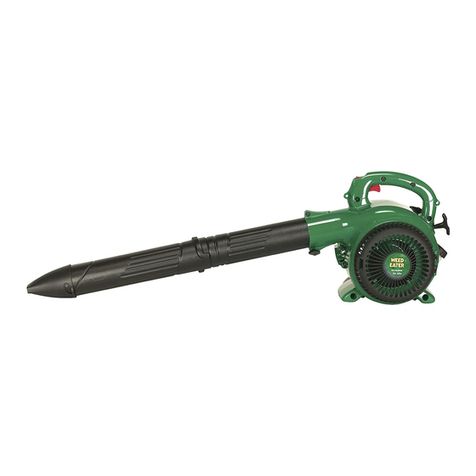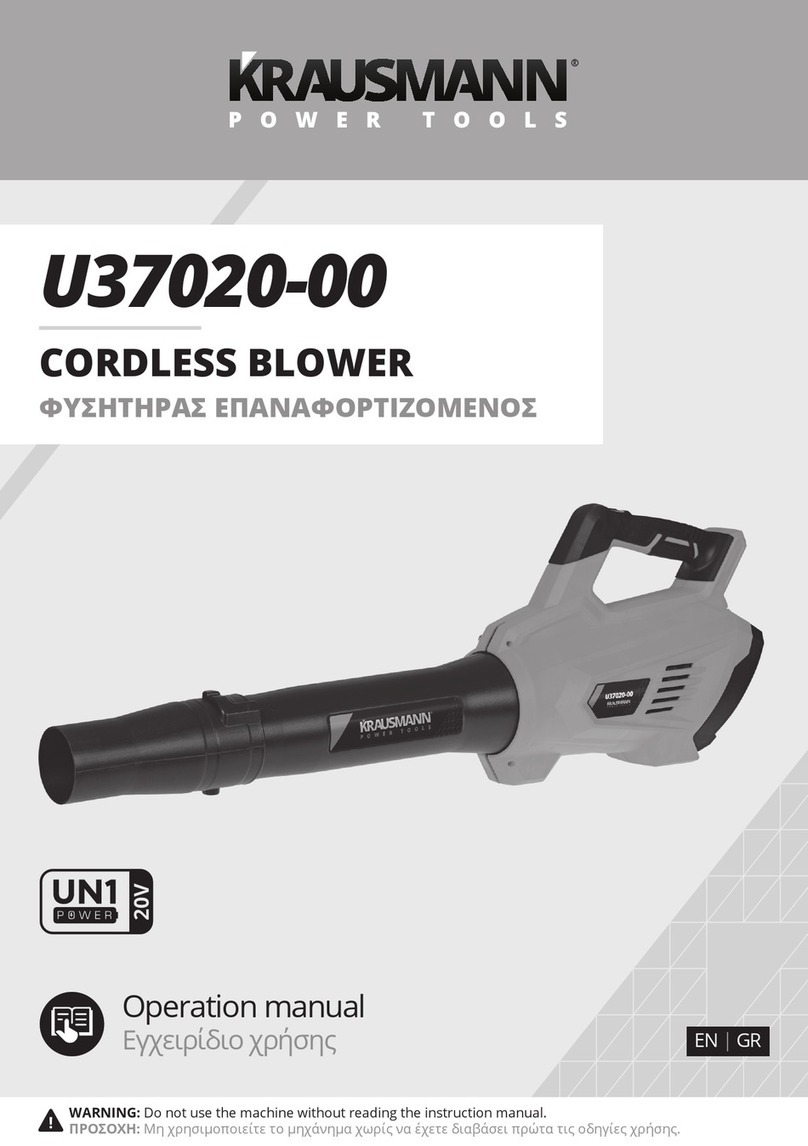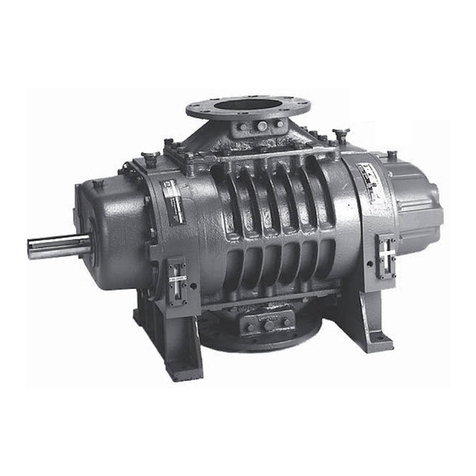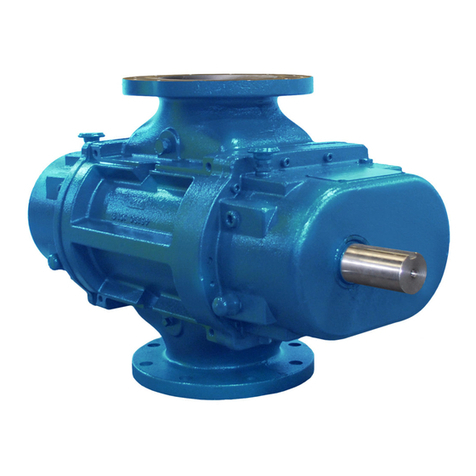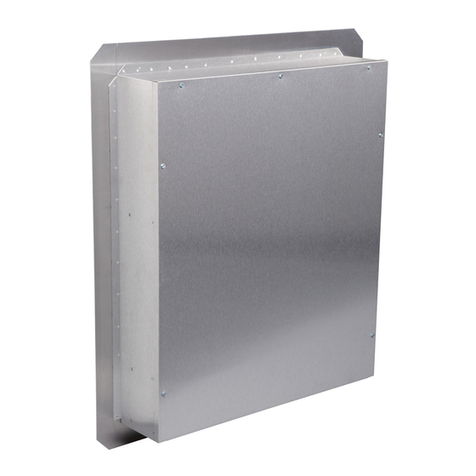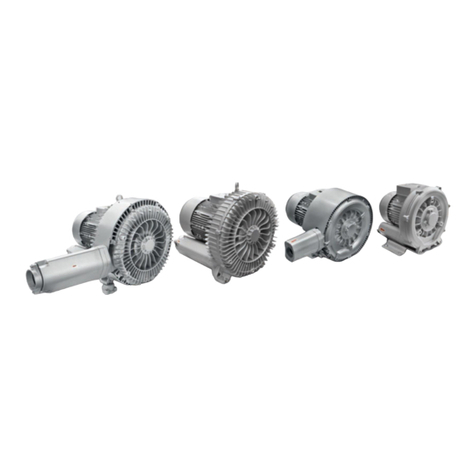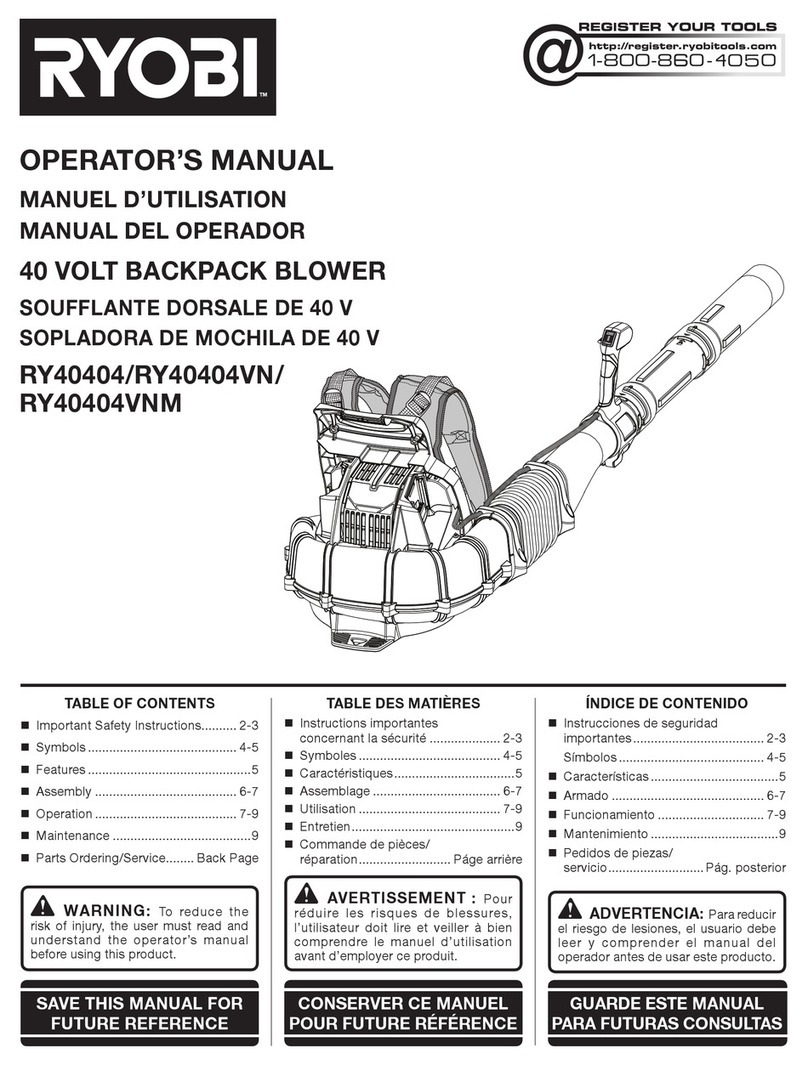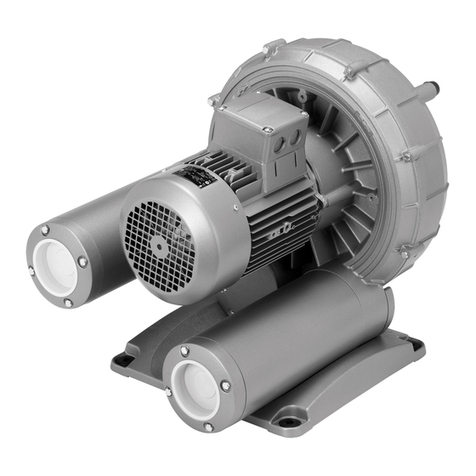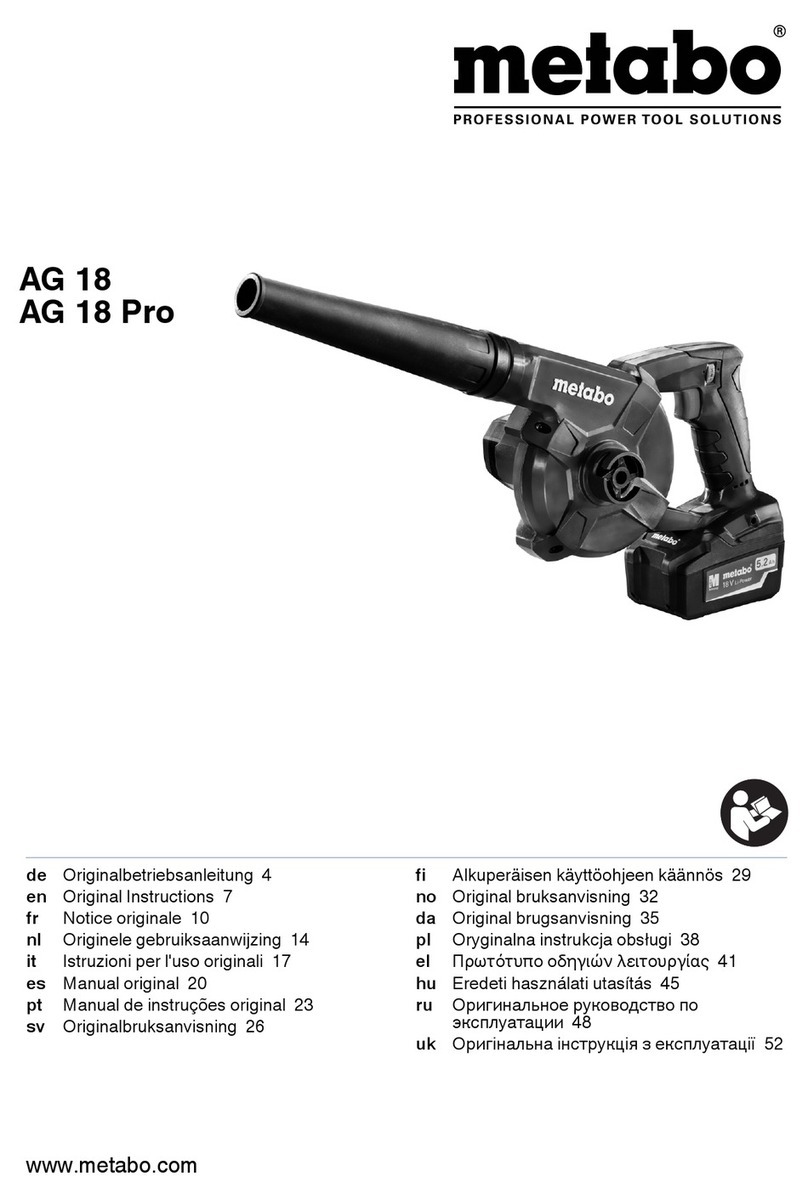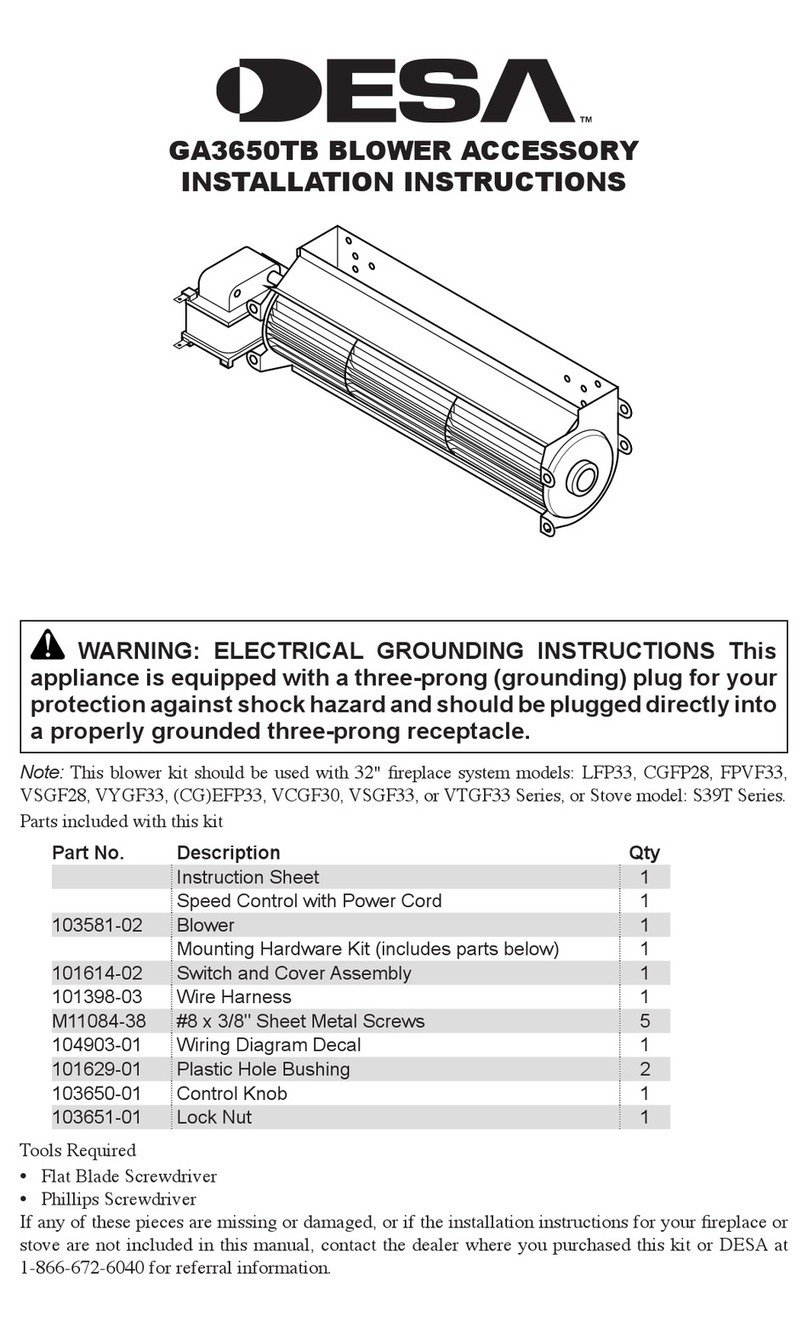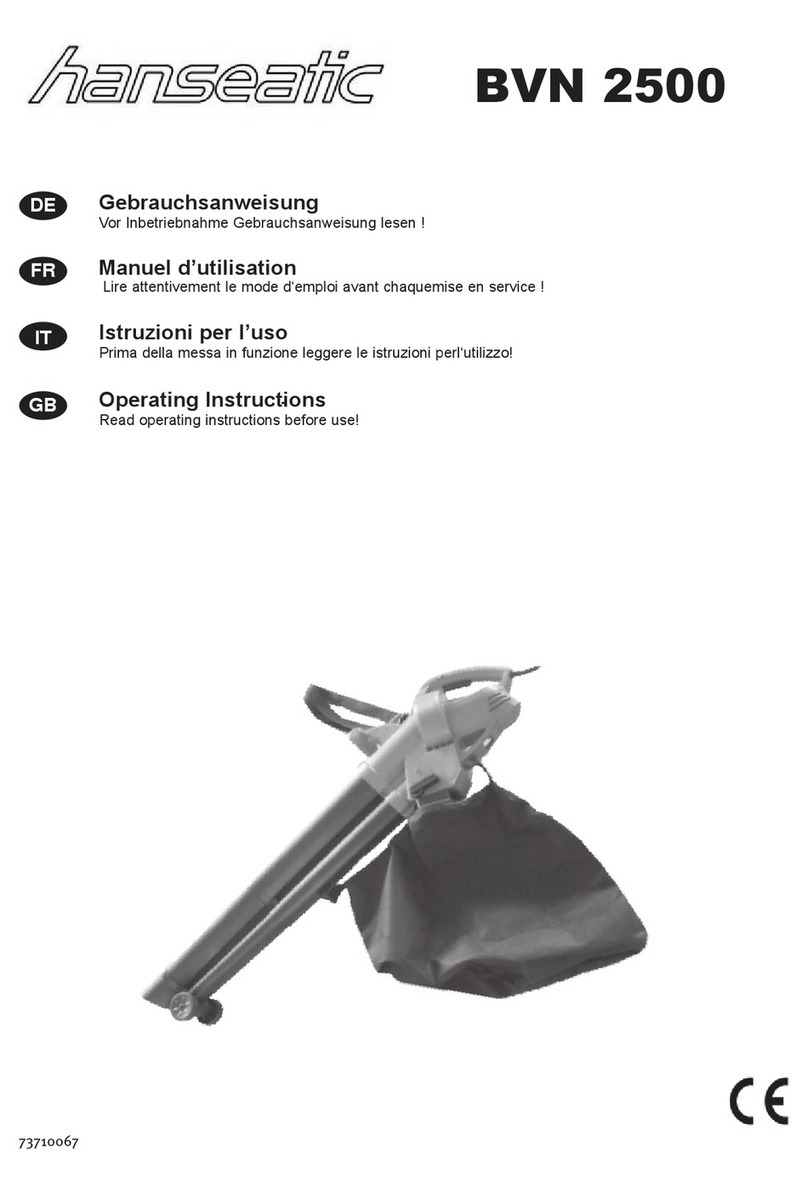
9
FREQUENTLY ASKED QUESTIONS
REGARDING LUBRICATION
What are the perceived modes of failure when units are run beyond
the specified duty cycles?
Several things are happening as the lubricant goes through the
unit. First, it is absorbing frictional energy in the form of heat.
This heat has to be dissipated through either surface contact with
cooler materials, or in a rest volume of lubricant. While reducing
the friction, the lubricant is also going through a shearing process
and the molecular structure is broken down.
The result is that the lubricant will begin to thicken. Because of the
shorter molecular chains and the drop out of additive packages.
The thickened lubricant will cause more drag, increasing the
friction and heat, and further degrading the lubricant.
Operation of the blower (environment, run time, speed, and pressure) has a direct effect on duty cycles. Our published cycles
are based on worst-case conditions.
What is the functional detriment if the “wrong oil” is used?
The lubricant is selected based on bearing and gear speed, and operating temperature. Too light of a lubricant increases wear by
not separating the sliding surfaces and it will not remove the heat adequately. If the lubricant is too thick, the drag in the bearings
is increased causing them to run hotter. Since it is thicker, it will not flow as readily into the gears and it will reduce the available
backlash. Lubricants at our conditions are incompressible.
What is the functional detriment if the oil is not serviced?
If the lubricant is not serviced at the proper interval the shearing action in the bearing and the gears will begin to take their toll
and the lubricant will thicken, making matters worse. The unit will run hotter and the wear on running surfaces will increase.
Generally, the lubricant will appear dirtier, this is actually material rubbed off the unit’s components. The discoloration comes from
overheating the additive package. An indicator of the breakdown of a lubricant is the increase in the TAN (Total Acid Number) and
a change in the base viscosity of ten percent.
OPERATION
Before starting the blower for the first time under power, recheck the installation thoroughly to reduce the likelihood of troubles. Use
the following list as a guide, but also consider any other special conditions in your installation.
Be certain no bolts, rags, or dirt have been left in blower.
Be certain that inlet piping is free of debris. If an open outdoor air intake is used, be sure the opening is clean and protected by
an inlet filter. This also applies to indoor use.
If installation is not recent, check blower leveling, drive alignment, belt tension, and tightness of all mounting bolts.
Be certain the proper volume of oil is in the oil reservoir chambers.
Be certain the driving motor is properly lubricated, and that it is connected through suitable electrical overload devices.
With electrical power off and locked out to prevent accidental starting, rotate blower shaft several times by hand to make sure
blower is rotating freely. Unevenness or tight spots is an indication of a problem that should be corrected before progressing.
Check motor rotation by momentarily pushing the start button and check flow direction of the blower. Reverse the motor
connections if flow is in the wrong direction.
Initial operation should be carried out under “no load” conditions by opening all valves and venting the discharge to atmosphere, if
possible. Then start motor briefly, listen for unusual noises, and check that the blower coasts freely to a stop. If no problem appears,
repeat this check, and let the motor run a little longer. If any questions exist, investigate before proceeding further. Assuming all tests
are satisfactory, the blower will now be ready for continuous full load operation. During the first several days, make periodic checks
to determine that all conditions remain acceptable and steady. These checks may be particularly important if the blower is part of
a process system where conditions may vary. At the first opportunity, stop the blower and clean or remove inlet filter. Also, recheck
leveling, coupling alignment or belt tension, and mountlng bolts for tightness.
RECOMMENDED SHUTDOWN PROCEDURE TO MINIMIZE RISK OF FREEZING OR CORROSION
When a blower is taken out of service, it may require internal protection against rusting or corrosion. The need for such protection
must be a matter of judgment based on existing conditions as well as length of down time. Under atmospheric conditions producing
rapid corrosion, the blower should be protected immediately. When high humidity or moisture is present in an air piping system,
1.
2.
3.
4.
5.
6.
7.
Figure 5. Locations of Oil Fill, Oil Drain Plug, and Oil Sight Glass
Oil Fill
Oil Sight
Glasses
Oil Drain
Plugs
NOTE: This illustration shows oil fill, oil drain, and sight
glass locations on both ends.
